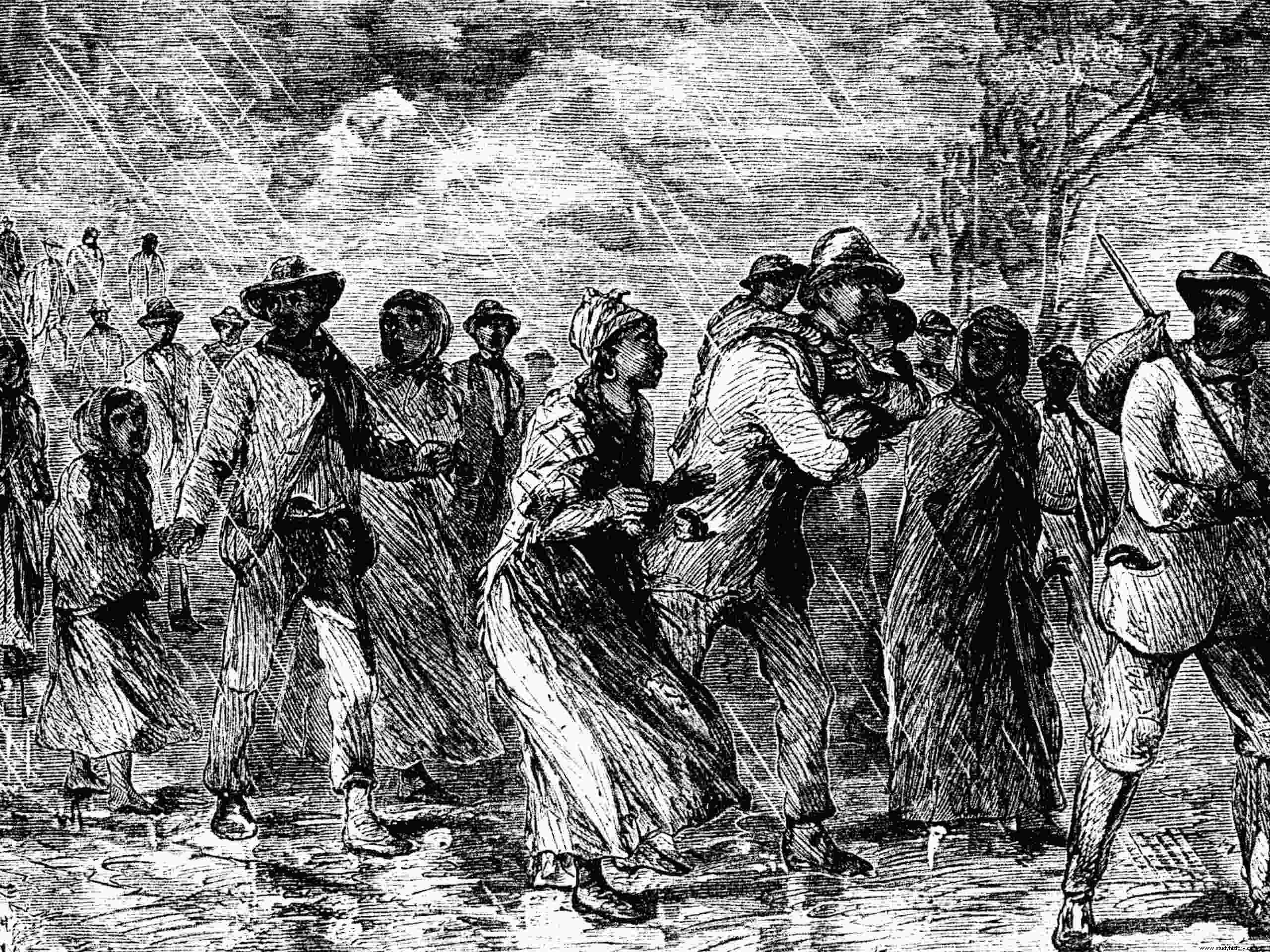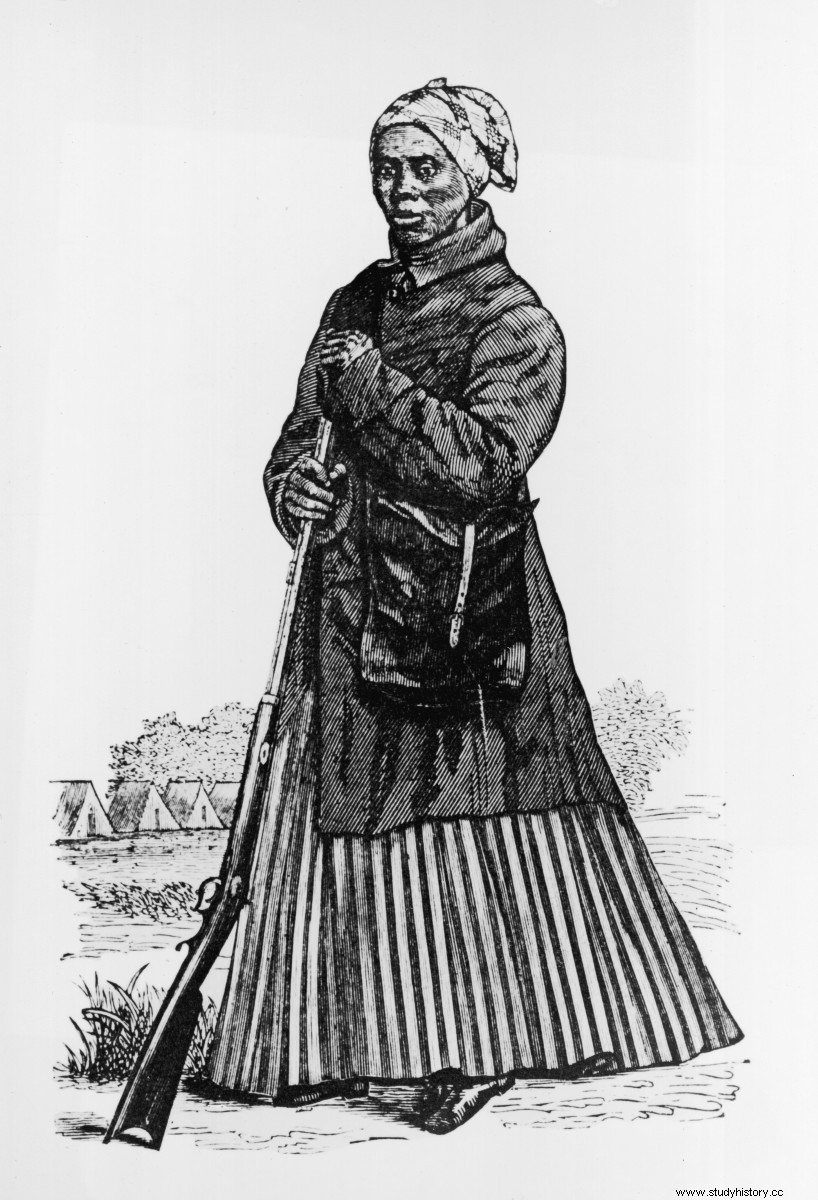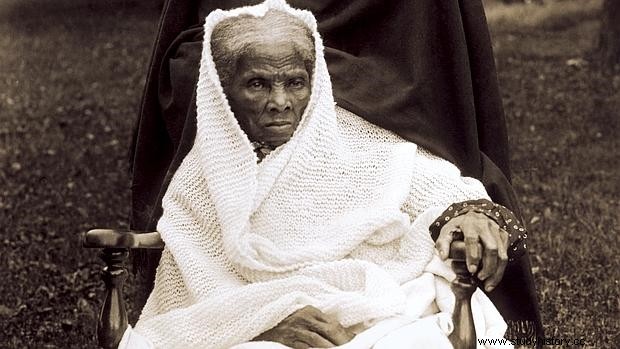The Underground Railroad and Harriet Tubman inspired today's people and organizations to help them escape a cruel fate.
March 10, 2022, it was 109 years since the world lost the abolitionist activist and former slave woman, Harriet Tubman.
She, along with members of the Underground Railroad, led hundreds of slaves to their freedom.
The underground railway

Contrary to the name, the Underground Railroad was not an actual railway.
It was a network of secret routines and safe houses in the United States
People, African Americans and whites, offered shelter and help to the escaped slaves in the south.
When the Underground Railroad began is unknown.
It operated from the end of the 18th century until the end of the Civil War.
At the beginning of the Civil War, efforts continued to free slaves, to undermine the Confederacy in a less secretive way.
Quaker abolitionists
Many consider the Quakers to be the first organized group to actively help escaped slaves.
Their campaign to end slavery dates back to the end of the 17th century.
In 1776, the US Congress banned the Quakers from owning slaves
Then, 14 years later, they called on the US Congress to abolish slavery
Their reason for abolishing slavery lies in the Quaker faith. They believe that all people are equal and worthy of respect. In addition, their view of respecting women began earlier than most societies in the 18th century.
Soon, many joined their struggle across the country, and they became difficult to ignore.
George Washington, in 1786, complained that the Quakers were trying to free one of his slaves.
In the early 19th century, Isaac T. Hopper, a Quaker, set up a network in Philadelphia that helped slaves flee.
Quakers established abolitionist groups in North Carolina. They laid the foundation for routes and refuge for escaped slaves.
The Origins of the 'Underground Railroad'
The earliest mention of an 'underground railway' was in 1831.
A slave-bound man, Tice Davids, escaped from Kentucky to Ohio. His owner accused an 'underground railway' of helping David to freedom.
Then, in 1839, a newspaper in Washington reported that a slave-bound man admitted, under torture, that he was planning to go north to follow a 'subway to Boston'.
There were imminent dangers of evacuating plantations, hence the establishment of vigilance committees.
Vigilance committees protected escaped slaves from bounty hunters in New York and Philadelphia.
Then, with the expansion of their activities, they led slaves on the run.
Thus came the 'Underground Railroad'.
Terminology for underground railways
Although the network was a metaphorical railway, the concepts assigned were of a railway nature.
'Conductors' led the fleeing slaves to 'stations', 'safehouses' or 'depots'. These were private homes and churches that served as hiding places.
'Station Masters' ran the hiding places. They were responsible for the safety of the escaped slave.
The 'shareholder' gave the money for bribes and other expenses.
'Passengers' were the escaped slaves traveling on the routes.
'Cargo' were the ones who arrived at the safe houses.
The Fugitive Slave Act of 1793
The federal government gave local authorities in all states the power to issue guarantees to "remove" all slaves they thought escaped.
It also made helping an escaped enslaved person a federal crime.
Non-slave states rarely enforced this law.
A 'slave hunter' saw any slave-bound person as an escapee. This terrorized the enslaved people and angered many white people.
What made Norsemen angry and terrified were rumors of slave hunters. It was said that they lured free children, from three to five years old, on boats and transported them into the Deep South.
How the underground railway worked
Each journey was different but equally dangerous because of The Fugitive Slave Act of 1793.
Liberated slaves sometimes sent a field agent.
Usually this was a traveling priest or doctor. They would pose as sellers or censuses.
Once on the plantation, they got in touch with a slave-bound person who wanted to escape.
Building a relationship took time. The agent needed to gain the confidence of the potential escapee.
With the confidence gained, they ensured the slave - bound person's first escape from the plantation.
In the first escape, escaped slaves found very few hiding places.
Until they reached certain points further north, they were on their own.
Then they found a conductor and began the journey to freedom.
The conductor led the fugitive to the first station, a house along the route. The stations were usually a day trip apart.
Stations often had secret passages and rooms to hide multiple escapes.
At the station, the fugitive was fed, shielded and possibly given a disguise. For example, in one situation, station chiefs disguised an escapee as a white upper-class woman. They even lent her a white baby as part of the disguise.
The shareholders financed all activities.
Where did the underground railway go?
The network of routes ran north to free states.
However, the majority of escapees went to Canada where they were free from The Fugitive Slave Act.
In Canada, they had the freedom to live where they wanted, sit on juries and more.
In addition, there were unsuccessful attempts to extradite the escaped slaves to the United States
Some subway operators were based in Canada and were working on incoming escapes to settle.
The extreme northern areas of the United States were known to protect slaves.
In the Deep South, however, the journey north was more treacherous. From there, their safest settlement options were Spanish-owned Mexico and Florida.
They would only achieve a secure settlement after days, weeks or even months of travel.
These self-settlements were usually of liberated slaves, friendly American Indians, or a religious group.
Many stayed in the first safe settlement.
Others waited for safe passage on a northbound boat or train. That was when bribery took place.
The escapes would then go to Canada.
Whatever they decide, vigilance committees help establish their new lives.
'Underground workers'
Some estimates say there were 3,200 "underground workers," half of whom were in Ohio.
Since secrecy was important, there was no formal or written organization.
Individual performance and overall reputation determined a managerial status.
Most of those involved are still lost in history.
In the same way, it is difficult to determine the total number of escaped slaves.
Today, there is still a social stigma against white southerners whose ancestors helped escape.
Harriet Tubman

Araminta 'Minty' Ross was born between 1820 and 1822 in Dorchester County, Maryland.
Her parents were Harriet 'Rit' Green and Ben Ross.
Minty had eight siblings. Despite the mother's efforts, slavery forced the siblings apart.
When she was five years old, the owners lent her to another family to take care of their baby. Her duties included rocking the cradle while she slept. The family punished Minty if the baby woke up and cried.
When she was seven years old, she worked for a planter, and checked musk traps in nearby bogs, even when she got measles.
Still, Minty said she preferred physical plantation work to indoor housework.
When she was 12, Minty took her first stand for justice.
An overseer was ready to throw a heavy weight on a slave-bound person trying to escape.
Minty stepped forward and the weight hit her head instead.
Bleeding and unconscious, she was taken and placed on the seat of a loom. She stayed there for two days without medical treatment.
As a result, the injury left her with a headache and narcolepsy for the rest of her life.
After the incident, she had vivid dreams and hallucinations that she claimed were religious. This made her less desirable to sell.
In 1840, at the age of 45, Ben Ross's owner set him free.
Several years later, Minty contacted a white lawyer to investigate his mother's status
The lawyer discovered that Rits' previous owner gave instructions for her to be released as a 45-year-old. A similar provision applied to Rit's children and any children she had after 45.
The new owners ignored it when they inherited the land.
Legally, it was impossible to challenge.
Marriage and the first escape
In 1844, Minty married a free man, John Tubman
Their marriage was complicated. While John was a free man, Minty was still a slave-bound person.
Therefore, because of her status, any child of hers and John would be a slave person.
Right after the marriage, she changed her name to 'Harriet Tubman', although this is still speculated.
In 1849, Harriet fell ill, which reduced her value as a enslaved person.
When her owner died, his widow began selling their slaves.
Harriet found out that her two brothers were to be sold. She could not sit and watch her family split further.
On September 17, 1849, she escaped with her brothers. Her husband chose to stay.
The widow-owner, unaware that they had disappeared at first, gave notice two weeks later. It described Harriet and her brothers, along with a handsome reward for their catch.
A few weeks after they left, the two brothers felt insecure about the escape. They went back and forced Harriet to go back with them.
Soon after, Harriet escaped again, but without the brothers.
The exact route she took is unknown. However, she used the Underground Railroad and was assisted by friendly white women.
Weeks later, she found freedom in Philadelphia.
'The moss of her people'
Harriet worked as a housekeeper. Although she was free, she was not happy living free on her own. She wanted freedom for family and friends.
Years after the escape, she heard news that the niece and the niece's children would be sold. She returned to Maryland and helped them along the subway.
The following year, she returned to guide other family members.
She found her husband, John, but also found out that he married a free woman in 1851. He chose to stay in Maryland.
Despite her anger, she went on to help those who wanted to leave.
She returned to the South several times and helped dozens of slaves escape.
Then came the Fugitive Slave Act of 1850. It allowed fleeing and liberated workers in the north to be captured and enslaved.
The law made Harriet's role as conductor more difficult. It forced her to carry her passengers further north at night.
Her pistol was for her own protection and to "encourage" passengers with care.
Some say that her experience with her husband made her harder. She did not tolerate rescuing or upsetting refugees, even threatening them if they intimidated the shouts of their alert slave hunters.
For babies and younger children, she drugged them to prevent slave hunters from hearing their cries.
Lacking sentimentality, she continued to move, surviving and helping slaves.
At the time, she became friends with other abolitionists, including Frederick Douglas, a former slave person.
Harriet established his own Underground Railroad network, learning the city and transportation routes that made up the south.
She personally led 70 people to freedom and instructed others on how to escape on their own.
She was never caught, nor did she lose a passenger.
<2> Harriet Tubman and the Civil War
The Civil War broke out in 1861 and Harriet found new ways to fight slavery.
The Union Army recruited her to help fleeing slaves at Fort Monroe.
She worked as a nurse, cook and landlady.
With her knowledge of herbal medicine, she treated sick soldiers and fleeing slaves.
In 1863 she became commander of an espionage and scout network for the Union Army.
From her own Underground Railroad network, she provided important information about the Confederate Army's supply routes and troops.
With the 700 enslaved people she liberated, they formed Black Union regiments.
Although she proved to be a fierce opponent, it took over three decades before the government recognized her military contribution and awarded her financially.
Harriet Tubman's later years
After the Civil War, Harriet settled with family and friends on the land she owned in Auburn, New York.
She married the former slave-bound man and Civil War veteran Nelson Davis in 1864.
Her first husband, John, died after an argument with a white man on the road in Maryland in the 1860s.
A few years later, Harriet and Davis adopted a girl, Gertie.
She had an open door policy for all in need and supported her philanthropy work by:
- sell their home grown products.
- raise pigs.
- Accept donations and loans from friends.
Although she remained illiterate, she toured the Northeast and spoke on behalf of the women's suffrage movement, working with Susan B. Anthony, a suffrage leader.
In 1869 she bought land next to her home and opened 'Harriet Tubman Home for Aged and Indigent Colored People'.
Unfortunately, she continued to suffer from head injuries, even after countless surgeries.
In 1911, her health deteriorated, eventually forcing her to move into a rest home.
Harriet Tubman died on March 10, 1913 of pneumonia.
Today's underground railway

Today's slavery is known as human trafficking.
The UN estimates that 12 million people are enslaved by forced labor and the sex industry.
There are organizations that became modern Underground Railroads:Polaris Project (named after the North Star followed the slave-bound people to freedom), the Emancipation Network and the International Justice Mission.
Together, these organizations help refugees escape human trafficking.
Their methods of doing this include community intervention, caring for victims, and prosecuting groups that enslave people around the world.
In the United States, escape routes for abused women and illegal "aliens" are also referred to as Underground Railroads.
the conclusion

Over 400 years after the formation of the Underground Railroad, after the liberation of so many slaves, it continues to this day.
In the footsteps of its predecessors, the modern underground railway helps men, women and children escape forced labor and the sex industry, to give them freedom and a sustainable life.
"I have heard their groans and sighs and seen their tears, and I will give every drop of blood in my veins to release them."
- Harriet Tubman, abolitionist, political activist and former slave-bound person.
